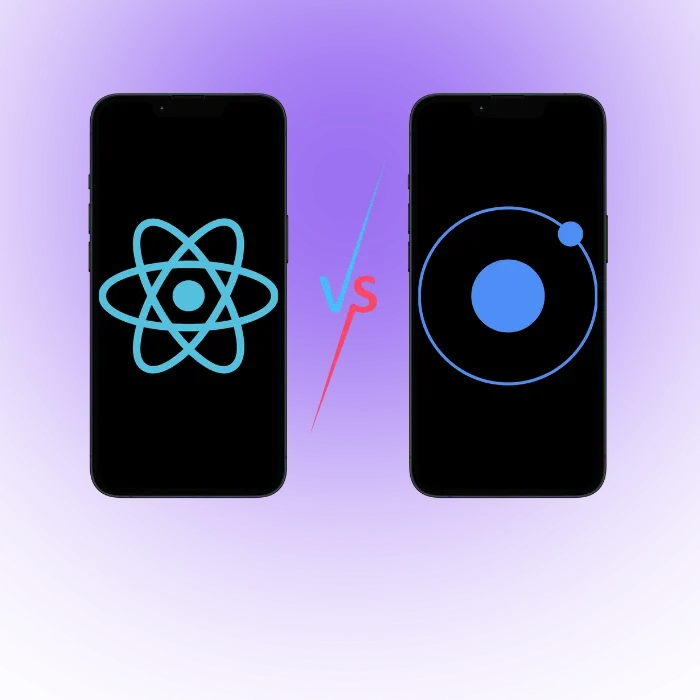The correct front-end framework can make all the difference in the constantly changing world of web development. It’s comparable to choosing the ideal tools for a craftsman in that it can affect how quickly, effectively, and finally a web project is completed. Therefore, you’ve come to the perfect place if you’re navigating the broad world of web development and wondering which front-end framework will best fit your demands. You will gain knowledge of the greatest JavaScript frameworks, front-end libraries, and much more as we delve into the complexities of the top front-end frameworks and well-known web development tools. Join us as we go through the intriguing world of front-end technology, where originality and innovation are valued highly.
Defining Front-End Frameworks: Laying the Foundations
Let’s build the groundwork before we go into the specifics of the top front-end frameworks. Why front-end frameworks are so important in web development and what do they exactly do?
A front-end framework is essentially a group of pre-written programs, libraries, and other resources that make it easier to build online interfaces. It’s comparable to having a well-stocked toolbox with every tool a web designer requires. These frameworks offer an organized method for developing websites, guaranteeing continuity, effectiveness, and maintainability over the course of a project.
What a front-end framework does for web developers is provide them access to a clean, well-organized kitchen, similar to what a trained chef would find upon entering one. By streamlining the development process, it frees developers to concentrate on designing outstanding user interfaces rather than establishing new technologies.
The Evolution of Front-End Development
Since the beginning of the internet, front-end development has advanced significantly. Similar to how cars developed from the horse-drawn carriage to the modern sleek, high-performance vehicles. Similar advancements have been made in front-end development tools and frameworks.
Web designers used to have to struggle with cross-browser compatibility concerns, carefully crafting lengthy lines of code to guarantee their websites worked and looked well on various browsers. But as the need for user interfaces and responsive web frameworks increased, so did the demand for more effective tools.
The Pioneers: Top Front-End Frameworks
Let’s now turn our attention to the top front-end frameworks that have been ruling the web development industry, which are the true stars of the show. These frameworks have not only endured the test of time, but they have also changed to accommodate developers’ growing needs.
React: A JavaScript Powerhouse
React, a JavaScript library created and maintained by Facebook, is at the top of our list. Building dynamic user interfaces using React is now synonymous with doing so quickly and effectively. It makes use of a component-based architecture, enabling programmers to divide intricate user interfaces into manageable, reusable components. React ensures lightning-fast rendering and a smooth user experience with its virtual DOM (Document Object Model) and unidirectional data flow.
Angular: Google’s Gift to Developers
Another formidable competitor in the front-end ring is Google’s Angular. It is a complete JavaScript framework that provides an all-inclusive answer for creating online apps. Due to its two-way data binding and vast ecosystem of modules and frameworks, Angular is a strong contender for complicated applications. Additionally, because of the supportive community, developers always have access to the newest tools and information.
Vue.js: The Rising Star
Vue.js is the new kid on the block that’s been making waves in the front-end development community, whereas React and Angular have been around for a while. Both novice and experienced developers find Vue to be an appealing alternative because of its simplicity and easy learning curve. It offers a flexible and user-friendly framework for creating contemporary web apps while fusing the greatest aspects of React and Angular.
Popular Web Development Tools
There are more web development tools available in addition to these top front-end frameworks that can improve your productivity and workflow. Let’s look at a few of these essential tools that any front-end developer needs to have.
Webpack: The Bundler Extraordinaire
The way developers handle the assets for their projects has been completely transformed by Webpack, a module bundler. It compiles all of your CSS, JavaScript, and other materials into optimized files. This speeds up your web apps by ensuring effective code splitting and lazy loading in addition to reducing load times.
Babel: Transpiling Magic
With the help of the JavaScript compiler Babel, you can create code that makes use of the most recent ECMAScript capabilities without having to worry about compatibility concerns with earlier browsers. Your web application will function flawlessly across many platforms since it transpires your code into versions that are suitable for a variety of browsers.
ESLint: Code Quality Assurance
In web development, maintaining code quality is crucial, and this is where ESLint comes into play. It is a linter tool that aids in enforcing coding standards and identifying typical mistakes in JavaScript code. You can make sure that your codebase is always clear, legible, and error-free by using ESLint.
Best Practices and Front-End Development Trends
After discussing the fundamental front-end frameworks and technologies, let’s take the time to examine the most recent developments and industry best practices.
Responsive Web Frameworks
Responsive web design is becoming a requirement in the modern, mobile-first era. As more devices and screen sizes become available, front-end developers are turning to responsive web frameworks like Bootstrap and Foundation to make sure their websites look great and work perfectly on all of them. These frameworks offer UI elements, a grid system, and CSS styles that make it easier to create responsive designs.
Embracing the Front-End Technology Stack
A collection of tools and technologies are included in the front-end technology stack, which is used to construct online applications. Common components of this stack include HTML, CSS, JavaScript, and a number of libraries and frameworks. Within this stack, developers are always experimenting with new pairings and integrations to enhance performance and provide outstanding user experiences.
Staying Informed: Front-End Development Trends
The field of front-end development is dynamic, with new trends and technologies emerging frequently. Developers need to keep learning new things and keep up with technological advancements to stay ahead of the curve. In the fiercely competitive field of web development, keeping an eye on new developments like Progressive Web Apps (PWAs), serverless architecture, and web components can help developers gain an advantage.
Conclusion: Choosing Your Front-End Arsenal
One thing becomes clearly evident as we come to a close on this thorough examination of the top front-end frameworks and web development tools: the front-end development industry is rife with opportunity and innovation. The trick is to choose the tools that are in line with the needs of your project and your development style, whether you go with industry heavyweights like React and Angular or the up-and-coming Vue.js.
Your biggest assets in this fast-paced digital environment are adaptability and a dedication to learning. Don’t be afraid to push the limits of creativity, keep experimenting, and stay current with front-end development trends. The finest front-end framework is ultimately the one that gives you the ability to realize your aspirations for web development.
So keep in mind that the canvas is yours to paint as you set out on your front-end development adventure, equipped with the knowledge of these top front-end frameworks, well-liked web development tools, and growing trends. You can create digital experiences that have an impact on the audience with the correct tools and a creative mindset.
In the end, the decision is yours: which front-end framework will you use to influence web development in the future?
FAQs
What is a front-end development framework?
A set of pre-written code, libraries, and tools called a front-end development framework simplifies the process of building online interfaces.
Why is choosing the right framework important?
A web development project’s pace, effectiveness, and success can all be strongly impacted by the framework that is chosen, hence doing so is essential.
What are some popular front-end frameworks?
Among others, React, Angular, and Vue.js are well-known front-end frameworks.
How does React differ from Angular and Vue.js?
While Angular and Vue.js are complete frameworks, React is a JavaScript library. React’s component-based architecture is its main strength.
What are responsive web frameworks?
Bootstrap and Foundation are examples of responsive web frameworks that aid developers in building websites that fluidly adjust to different devices and screen sizes.
What is the front-end technology stack?
The HTML, CSS, JavaScript, and a variety of libraries and frameworks make up the front-end technology stack, which is used to create web applications.
What are some emerging trends in front-end development?
Progressive Web Apps (PWAs), serverless architecture, and the use of web components are all emerging trends.
Why is code quality important in front-end development?
A web application is kept clean, readable, and free of frequent faults by maintaining code quality. This is made possible by resources like ESLint.
How can I stay updated with front-end development trends?
Following industry blogs on a regular basis, going to conferences, and interacting online with the developer community are all ways to stay current on trends.
Which front-end framework should I choose for my project?
The framework you choose will rely on the needs of your project and how well you know the framework. It’s critical to assess each to find the best fit.






